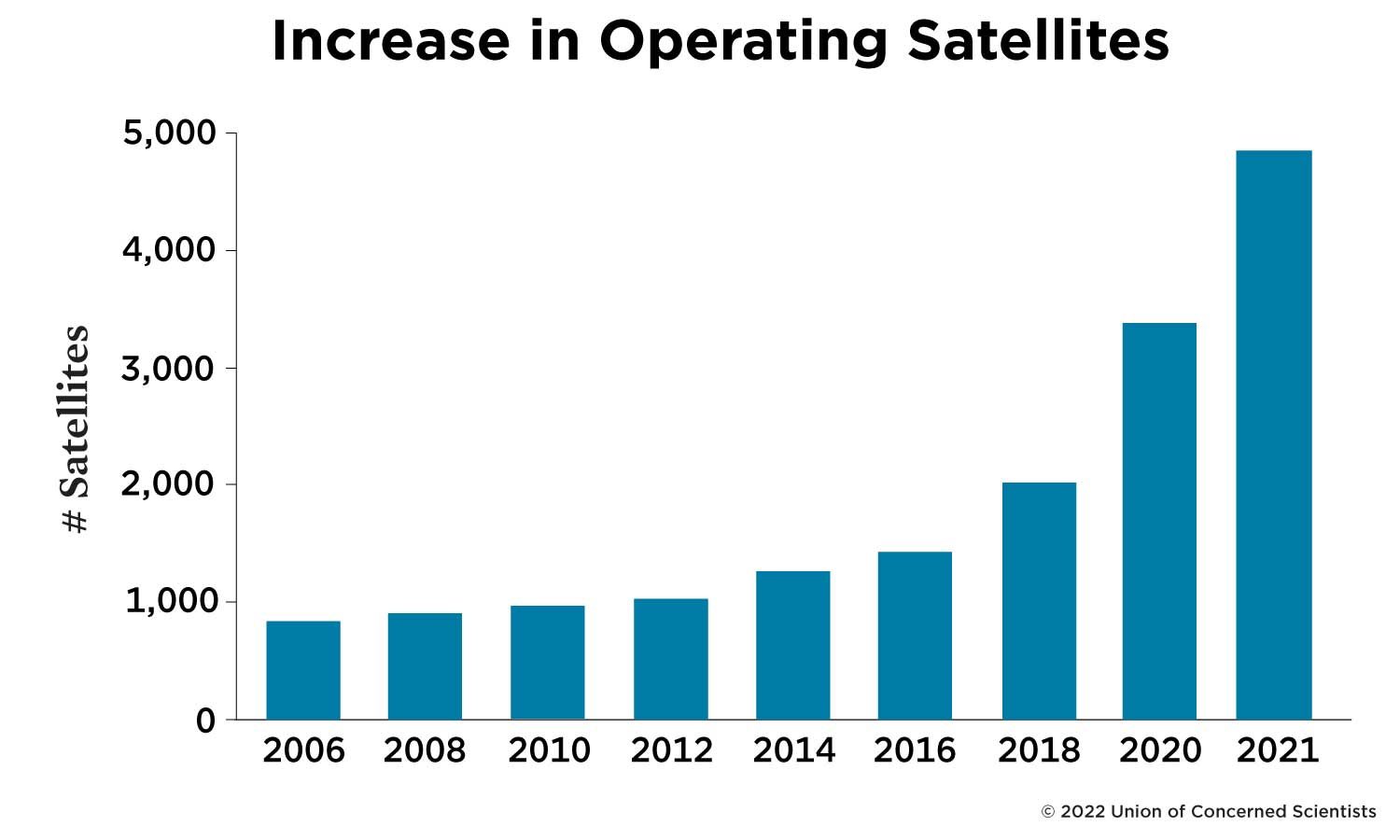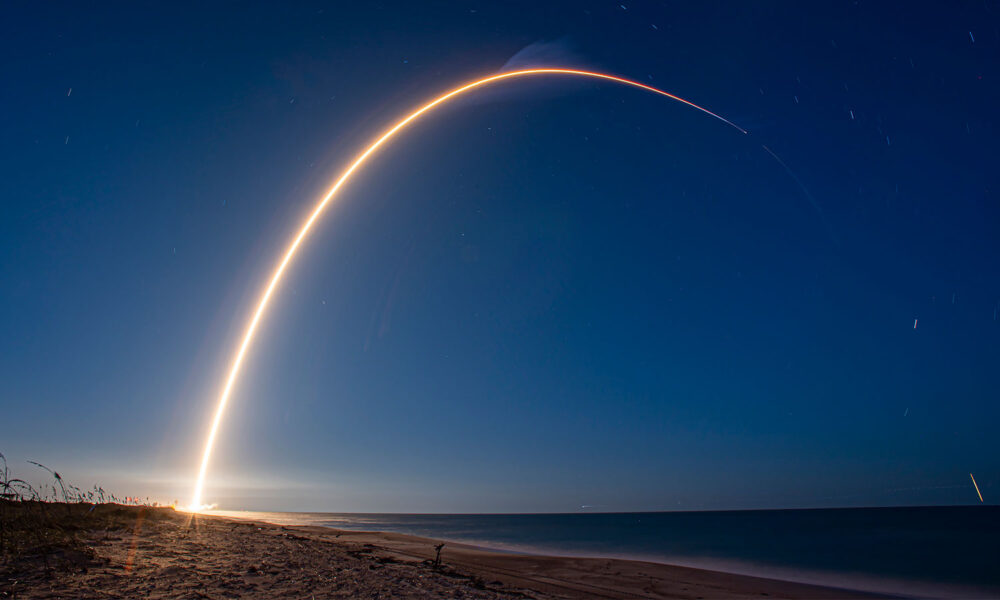Between April 31 and December 31, 2021, 866 satellites were put into orbit. While not as dramatic as the 836 launched in the first four months of the year, it completes a meteoric rise of 1,702 satellites for the year. The graph below shows the incredible acceleration in the number, up to a total of 4,852 satellites as of the end of 2021.
The growth is astounding. For example, the number launched this year is more than the total number of operating satellites in 2016, just six years ago. Over the last six years, the number increased 20% annually on average, jumping to more than 30% the last two years.
Moreover, while the rate of increase almost certainly won’t endure much longer, the number of operating satellites will continue to grow dramatically. As widely reported, the Starlink network already has permission to launch up to 12,000 satellites and Elon Musk would like to a second generation of 30,000 more satellites. Those numbers have NASA worried. In a submission to the Federal Communications Commission, the agency wrote: “NASA has concerns with the potential for a significant increase in the frequency of conjunction events and possible impacts to NASA’s science and human spaceflight missions.”
And Starlink isn’t alone. If all the planned networks move forward – perhaps a dubious proposition, but possible – the total number of satellites would near 100,000. At that point, not only would our database become unwieldy(!), the likelihood of adverse outcomes rises significantly, including increased risk of collisions, impacts on the International Space Station, and complications for earth-based astronomy.

As always, kudos to my colleague, Teri Grimwood, UCS Satellite Database researcher, for tracking down 28 pieces of information for each of these 4,852 satellites. If you’d like email notification when the updates are made, please sign up here.
Russian ASAT test
On November 15, Russia conducted a direct-ascent anti-satellite test (DA-ASAT), destroying one of its own space objects, a defunct satellite, in low-earth orbit. Direct ascent means that the missile was launched from the ground, not from within space. The test created thousands of pieces of debris at an altitude that is widely used for space activities by many countries. The test was widely condemned by the international community.
There were some hopes that the international reactions to the Russian test could present a window of opportunity, including the possibility of a multilateral ban on destructive ASAT tests. Unfortunately, the current crisis in Ukraine will likely prohibit near-term progress but could – if resolved diplomatically – lead to a new chance to negotiate such a ban. Though somewhat dated now, in 2012 UCS produced this helpful history of ASAT programs from the 1950s and onward.
Space tourism
The last six months of 2021 saw a massive race to space by billionaires. On July 11, Virgin Galactic launched its first tourist flight with its founder, Richard Branson, on board. The flight was launched from the company’s facility in New Mexico, Spaceport America, with a four-person crew and two pilots. It flew just above the boundary of space (100 kilometers), where everyone experienced about four minutes of weightlessness. The cost of a spaceflight ticket with Virgin is now $450,000.
Blue Origin, with founder Jeff Bezos and three others, flew for the first time on July 20. The flight included Wally Funk, a Mercury 13 aviator. The vehicle, named “New Shepard,” flies autonomously, so there weren’t any pilots on board. The flight reached 107 kilometers above earth and lasted about 10 minutes.
On September 16 Elon Musk’s SpaceX joined the trend with a three-day orbital mission around the Earth featuring an all-civilian crew on Inspiration 4. Paid for by Jared Isaacman, his guest, Hayley Arceneaux, 29, is a childhood bone cancer survivor and now a physician assistant at St. Jude Children’s Research Hospital in Memphis, where she received treatment as a child. Isaacman has already donated $100 million to St. Jude’s and hopes to raise another $100 million in donations. The capsule, Inspiration 4, was fully automated, orbited the earth for three days at 160 kilometers, and then splashed down off the Florida coast for recovery.
On October 13, the New Shepard took its second flight with four passengers, including William Shatner. The final flight for 2021 took place on December 11, with six passengers including Michael Strahan, host of “Good Morning America.”
Finally, on December 9, Yusaku Maezawa, a Japanese billionaire, arrived at the International Space Station for a 12-day stay after riding into outer space aboard a Russian-built Soyuz capsule. The capsule was launched from Russia’s Baikonur Cosmodrome in Kazakhstan. This was the first self-funded tourism mission to the International Space Station in a decade.

